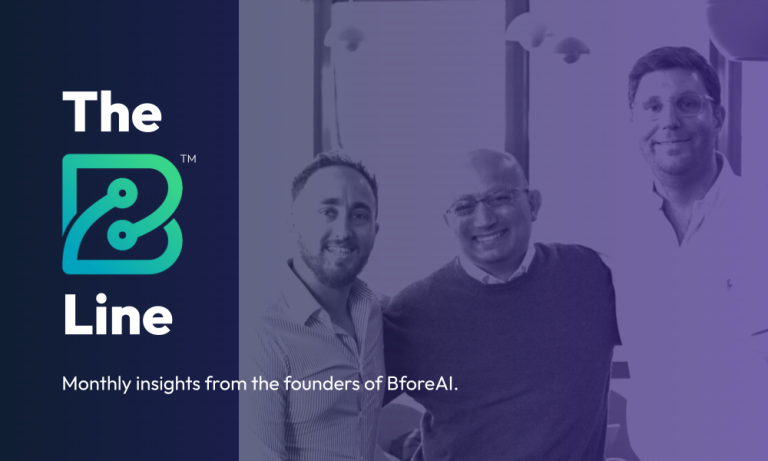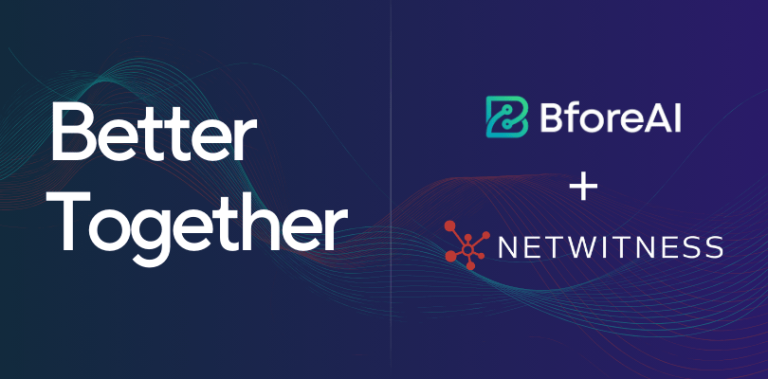- Threat intelligence involves collecting, analyzing, and disseminating information about potential cyber threats to inform decision-making and protect systems.
- A threat intelligence platform gives organizations a single point of access to organize and analyze real-time threat data from multiple sources.
- PreCrime™ Intelligence uses behavioral AI to predict and block future malicious infrastructure, empowering security teams to prevent attacks in near real-time.
From sophisticated phishing campaigns to self-replicating malware, organizations face a constant barrage of cyber threats. Typically, security teams are looking at a variety of external sources, making it difficult to prioritize and keep track of threat data in a unified way.
A threat intelligence platform unifies and streamlines how data is collected, analyzed, and acted upon. An effective platform pulls information from a wide range of sources — such as open feeds, commercial intelligence, and internal logs — and centralizes it for easier analysis and faster response.
Threat intelligence platforms integrate seamlessly with other security tools, enabling your organization to quickly detect and respond to hazards wherever they arise. By providing real-time, actionable insights, they help prioritize risks and automate responses, ensuring security teams are always one step ahead of attackers.
This collaborative, preemptive approach not only strengthens defenses but also supports business continuity and builds trust in the face of a complex digital environment.
Defining Threat Intelligence: The Information Advantage
Threat intelligence is the process of collecting, analyzing, and disseminating information about potential dangers, vulnerabilities, or adversaries. It transforms raw data into actionable insights, informing decision-making while helping protect systems and interests.
Effective intelligence is not just about gathering information — it’s about providing the context necessary to understand cyber threats. This allows your organization to anticipate attacks and prioritize its defenses.
There are four primary types of threat intelligence, each serving a distinct purpose. By delivering context-rich, actionable insights across these levels, they empower your organization to make informed decisions, prioritize resources, and improve its overall security posture.
Strategic threat intelligence
Strategic intelligence helps organizations align cybersecurity investments with business objectives. It provides a broad overview of the hazards in the digital landscape, including both global risks and industry-specific challenges.
Tactical threat intelligence
Tactical threat intelligence focuses on the technical details of adversary tactics, techniques, and procedures (TTPs). It’s used by security teams to understand how attackers operate and to strengthen defenses against specific attack methods. This type of intelligence often includes recommendations for improving security controls.
Operational threat intelligence
Operational threat intelligence provides specific details about impending attacks, such as information about campaigns by malicious actors, their motivations, and capabilities. It’s actionable and helps security teams respond to current or emerging hazards by understanding the “who,” “why,” and “how” behind attacks.
Technical threat intelligence
Technical threat intelligence centers on indicators of compromise (IOCs), such as:
- Malicious IP addresses
- File hashes
- Domain names
It enables rapid detection and response to challenges at a granular level by being machine-readable and integrated into security tools for automated defense.
What Is a Threat Intelligence Platform?
Unlike traditional security tools, a threat intelligence platform centralizes digital hazard intelligence, streamlining the process of collecting, contextualizing, and disseminating information. This improves your organization’s overall security posture while providing your security teams with actionable insights to defend against digital challenges.
Data aggregation
TIPs gather threat intelligence from diverse sources, such as open-source intelligence (OSINT), commercial hazard feeds, internal security logs, vulnerability scanners, and other security tools. This comprehensive collection ensures that your organization has a holistic view of challenges across the digital landscape.
Data enrichment and normalization
This step is crucial for effective analysis and response. After collection, the TIP standardizes the data format and enriches it with additional context, such as:
- Threat actor profiles
- Geolocation
- Historical activity
This makes raw data more understandable and actionable.
Analysis and correlation
Advanced TIPs use AI and machine learning (ML) to analyze aggregated and enriched data, identifying factors that may not be apparent through manual analysis, such as:
- Patterns
- Relationships
- Emerging threats
This capability enables early detection of sophisticated attacks.
Indicator management
TIPs centralize the management of indicators of compromise and indicators of attack (IoAs). This allows your security teams to track, update, and act on these critical data points efficiently.
Threat scoring and prioritization
By assessing the severity, relevance, and potential impact of hazards, TIPs help security teams focus on the most critical risks, optimizing resource allocation and response efforts.
Sharing and dissemination
TIPs help share important threat information with teams inside and outside the organization. They connect with other security tools, like firewalls, to make sure the information can be used to protect the entire company.
Workflow automation
TIPs automate repetitive tasks related to threat intelligence analysis and response, such as alert triage, playbook execution, and incident notification. This enables faster and more consistent mitigation of digital challenges.
By consolidating and operationalizing data, threat intelligence platforms empower organizations to detect, prioritize, and respond to cyber hazards more effectively. They transform threat intelligence from a manual, fragmented process into a streamlined, automated, and strategic component of cybersecurity operations.
Traditional Threat Intelligence vs Predictive Threat Intelligence
Traditional threat intelligence and predictive threat intelligence preemptive security represent two distinct but increasingly interconnected approaches in the cybersecurity landscape.
Traditional threat intelligence
Traditional threat intelligence focuses on collecting, analyzing, and disseminating information about past and current threats. It primarily uses IOCs such as:
- Malicious IP addresses
- File hashes
- Known attack signatures
This intelligence is invaluable for understanding adversary tactics, attributing attacks, and conducting forensic investigations after an incident has occurred. However, its reactive nature means organizations often respond only after a threat has materialized.
Predictive threat intelligence
In contrast, predictive threat intelligence identifies patterns and trends that signal future attacks, shifting the security paradigm from reaction to preemption. This is done using:
- Advanced data analysis
- Artificial intelligence
- Machine learning
They go beyond traditional IOCs by identifying indicators of future attacks (IoFAs), which are signals that suggest an attack is being planned or is likely to occur. This forward-looking intelligence enables organizations to take preemptive action, such as patching vulnerabilities, adjusting defenses, or even disrupting adversary operations before an attack unfolds.
Preemptive security is built on the foundation of predictive intelligence. It’s about stopping attacks before they happen by predicting, disrupting, and even taking down hazards in their early stages.
Some predictive attack intelligence solutions have the ability to forecast attacks an average of weeks ahead of traditional threat intelligence. They provide a critical window for organizations to act.
This preemptive approach allows security teams to:
- Implement countermeasures
- Notify stakeholders
- Minimize risk
All of this can be achieved before they can cause harm.
Why You Need a TIP
Your business faces increasingly sophisticated attacks that demand intelligent defense strategies. A threat intelligence platform is essential because it aggregates data from a wide range of sources, including open-source intelligence, proprietary feeds, and industry reports. The platform converts this information into actionable insights, empowering your security teams to detect, analyze, and respond to threats more effectively.
One of the primary benefits of a TIP is its ability to provide real-time insights into emerging threats, allowing your organization to identify and mitigate risks before they escalate into serious incidents. This preemptive approach significantly reduces the likelihood and impact of successful cyberattacks.
Additionally, TIPs streamline incident response by automating the collection and analysis of threat data. They:
- Accelerate response times
- Reduce alert fatigue
- Prioritize security efforts based on actual risk
TIPs also enhance threat awareness and foster collaboration by enabling the sharing of intelligence across departments and with external partners, building a stronger collective defense. The automation and advanced analytics they offer improve operational efficiency, freeing up your IT and security personnel to focus on high-priority tasks that require human expertise.
Ultimately, TIPs help your business avoid costly remediation, regulatory fines, and reputational harm by preventing breaches and minimizing response times.
Choose BforeAI for Your Business
BforeAI stands out among threat intelligence platforms thanks to our PreCrime™ Intelligence technology. PreCrime™ Intelligence uses behavioral AI to predict and block future malicious infrastructure, empowering security teams to prevent attacks in near real-time.
By continuously monitoring over 500 million domains and more than 1 billion infrastructures, our platform identifies suspicious activity patterns and can disrupt attack infrastructure within minutes. With over 98% coverage of top-level domains and a false positive rate below 0.05%, PreCrime™ integrates seamlessly with endpoint detection and response solutions like Microsoft Sentinel and CrowdStrike.
At BforeAI, our automated, industry-agnostic approach ensures robust protection for sectors from finance to retail, minimizing risk and operational disruption. Contact us today to ensure that your business stays one step ahead in the morphing threats of online fraud.





